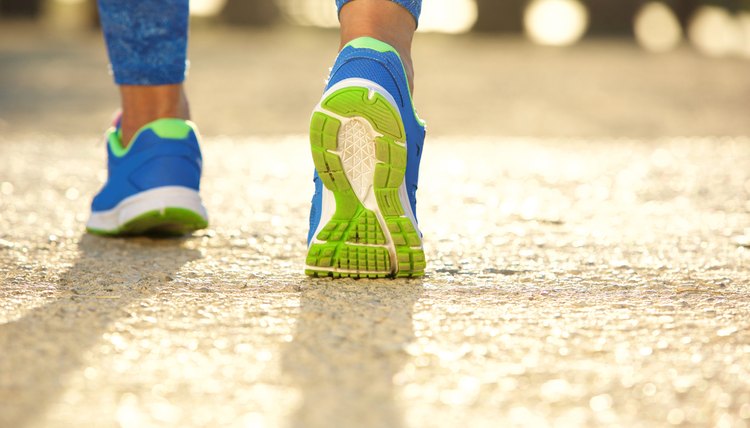What does fact checked mean?
At SportsRec, we strive to deliver objective content that is accurate and up-to-date. Our team periodically reviews articles in order to ensure content quality. The sources cited below consist of evidence from peer-reviewed journals, prominent medical organizations, academic associations, and government data.
The information contained on this site is for informational purposes only, and should not be used as a substitute for the advice of a professional health care provider. Please check with the appropriate physician regarding health questions and concerns. Although we strive to deliver accurate and up-to-date information, no guarantee to that effect is made.
Does Walking Strengthen Hamstrings or Quads?

Walking not only improves your cardiovascular health, but it is also a weight-bearing exercise that strengthens your bones. During the motion of walking, you activate numerous muscles in the lower body, including the hamstrings and quadriceps.
Benefits of Walking
While walking, your heart rate becomes elevated, your breathing becomes more labored and you might break a sweat. This in turn promotes weight loss and builds up your aerobic capacity. You also work your hamstrings and quadriceps, so both muscles actually become stronger. The hamstrings sit on the back of the thighs and the quads sit on the front.
Physiology of Walking
Your hamstrings are activated in the extension phase and the start of the swing phase of the leg when you take a step.These motions are known as hip extension and knee flexion. The quads function to flex the hips and extend the knees. Hip flexion takes place when you move your thigh toward your stomach. Knee extension takes place when you straighten your leg. All of these motions occur while you walk, which is why you work both muscle groups.
Additional Muscles Worked
Walking also works several other muscles throughout the body. The hip flexors, also known as the iliopsoas, run from the lower stomach to the upper thighs. They are worked every time you flex your hip. The calves, which consist of the gastrocnemius and soleus muscles, sit on the back of the lower legs and are activated when you push off the ground with your foot. This is called plantar flexion. The rectus abdominis, obliques and erector spinae rest in the core of the body. They all contract together to keep your body stable and to produce force. The rectus abdominis is in the stomach, the obliques run down the sides of ribcage and the erector spinae spans the spinal column.
Tricks for Gaining More Strength
Walking on flat ground strengthens the hamstrings and quads, but you can enhance the effect by adding resistance to your body. A weighted vest is a good option because the weight is distributed evenly and you can adjust it from light to heavy. Walking up hills is another way to increase the work on your thighs. Practice walking forward and backward. If you use a treadmill for your walking workouts, increase the incline.
Walking Form
Proper form needs to be taken into consideration with walking, just like weight training. Keep your shoulders back, chest up and your gaze fixed forward at all times. Move your arms in a steady motion and push forcefully off the ground with your feet.
Tips About Weight Training
Walking will not make your hamstrings and quads large. If this is your goal, perform weight training exercises that involve hip flexion and extension, and knee flexion and extension. Squats, leg presses, lunges, stepups, leg extensions and leg curls work well. Use a heavy resistance to make the most amount of progress.
References
Writer Bio
I am very genuine and magnetic on camera, and have made numerous videos on my own for clients and other organizations that I'm affiliated with. I also have a degree in Sport Management, and multiple certifications to back up my validity. I've also been featured in three different exercise infomercials and had a speaking role in a National Lampoons movie.
